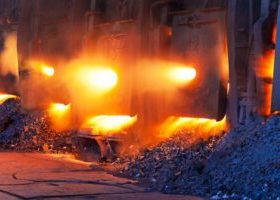You may not realize it, but when you board a modern aircraft, certain components of the seats, luggage compartment brackets, and even some parts near the engines are likely made of PEEK.
This seemingly ordinary yet exceptionally high-performance plastic is quietly transforming our lives.
What is PEEK Material?
PEEK is a semi-crystalline, high-performance, rigid engineering thermoplastic known for its versatility and outstanding resistance to harsh chemicals. First synthesized in 1977, PEEK achieved industrial-scale production by 1981. Although often grouped with fluoropolymers like PFA or PTFE, PEEK contains no fluorine. Its excellent mechanical properties, wear and fatigue resistance, and ability to withstand temperatures up to 260°C make it one of the most resilient and widely used thermoplastics in the plastics industry. PEEK is primarily used in aerospace, automotive, electrical, biomedical, and semiconductor industries. It can be processed via traditional plastic manufacturing methods such as injection molding, extrusion molding, and compression molding.
Why is PEEK So Unique?
PEEK exhibits superior creep resistance, making it ideal for long-term mechanical stress applications. During bending and tensile tests, this polymer demonstrates an unparalleled balance of mechanical properties, including the ability to endure high loads over extended periods without residual damage, thus maintaining structural integrity.
Additionally, PEEK possesses exceptional tensile strength, retaining remarkable durability even at temperatures as high as 299°C. Carbon fiber reinforcement is highly recommended to optimize its performance—proper reinforcement can increase tensile strength from 25,000 psi to 30,000 psi, enhancing the material’s elasticity. (psi: pounds per square inch)
Beyond mechanical strength, PEEK offers excellent insulation properties, stable across various temperature ranges and environmental conditions, making it a versatile choice for electrical applications.
PEEK’s unique crystalline structure grants it strong resistance to various liquid media while also providing outstanding fatigue performance, allowing it to endure cyclic loads over long periods without failure.
The polymer’s helical molecular geometry facilitates effective reinforcement with glass or carbon fibers, significantly improving thermal conductivity—an advantage for applications requiring efficient heat management.
PEEK is also environmentally friendly. With a flammability rating of V0 at 1.45 mm thickness and a Limiting Oxygen Index (LOI) of 35%, it emits relatively low levels of toxic gases and smoke compared to other thermoplastics, making it a safer alternative in environments where flammability and toxicity are concerns.
SAM offers PEEK in various forms, including sheets, rods, filaments, capillary tubes, spheres, and powders.
Key Advantages of PEEK:
Alloy-like strength due to its toughness, stiffness, and exceptional fatigue resistance.
Superior sliding properties, ideal for applications requiring low friction and wear coefficients.
Extreme chemical and corrosion resistance.
Best-in-class flame retardancy (1.45 mm thickness) without requiring additional flame retardants.
High peel resistance, enhancing durability in harsh conditions and making it suitable for wiring and electromagnetic applications.
Limitations of PEEK:
Despite its outstanding properties, PEEK has some limitations:
High-temperature processing demands advanced injection molding capabilities, limiting some manufacturers.
Relatively low UV resistance.
Its premium mechanical properties restrict its use in standard consumer-grade parts, causing high cost.
Where is PEEK Used?
PEEK is one of the most widely used thermoplastics in aerospace, automotive, biomedical, and electrical industries, suitable for manufacturing bearings, insulated cables, safety gears, pumps, heavy machinery components, valves, compressors, and semiconductor equipment.
Aerospace
In aerospace, PEEK components are increasingly replacing aluminum and other metals due to their cost efficiency and tight tolerances. Its ability to withstand high temperatures and provide high lubricity makes it ideal for critical engine parts. PEEK also reduces smoke and toxic gas emissions while offering flame resistance and rain erosion protection for external aircraft components.
Healthcare
PEEK ensures safety, comfort, and durability in medical applications, including dental instruments, endoscopes, thermometers, and dialysis machines. It is used in sterile containers, prosthetic limbs, dental implants, and load-bearing surgical implants due to its chemical, steam, and solvent resistance.
Electronics
PEEK plays a vital role in electronics, found in smartphones, cables, appliances (refrigerators, ACs, washing machines), computers, and wearables. Its thermal and mechanical stability ensures safety in handling silicon wafers and other sensitive components. Beyond these, PEEK is also used in FMCG, hospitality, chemical processing, packaging, and logistics.
Read more:
The “King” of Plastics – PEEK (Polyetheretherketone)







